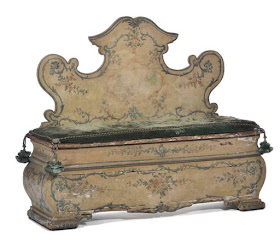Built and owned by the more affluent members of society and perceived as a status symbol, the conservatory derives its name from the Italian term “conservato”, meaning stored or preserved, and Latin “ory”, meaning a place for. The conservatory would appear to have its origins as far back as the days of the Roman Empire when they created structures capable of allowing light in while retaining heat via sheets of mica instead of glass which was not available at the time.
Conservatories became more popular in the late 19th century with the traditional conservatory being a large greenhouse used for growing tender and rare plants. Wealthy citizens erected conservatories on their estates and created glass garden rooms in their urban mansions. Many hired botanists to stock their conservatories with tropical plants from around the world. This became a way to cultivate tropical fruits (hence the term "orangery") as orange and lemon trees were brought back during the great Age of Exploration. These garden rooms evolved into elegant spaces in which patrons might enjoy the experience of truly connecting with nature.
Regardless if you call it a conservatory or garden room, a beautiful structure that creates a bridge between outdoors and inside will let you have fun relaxing in your own private garden.
French orangerie via Cote Ouest
What is the difference between a garden room, a conservatory, and an orangery? Generally all of these buildings fall under the umbrella of “garden room”.
source unknown
The conservatory began life as a place for potting and preserving tender plants. Originally, they were purely functional outbuildings to country houses and stately homes. However eventually they began to take on a more "decorated" look.
via Pinterest
People became aware that the conservatory could also be a garden room, a delightful spot in which to enjoy outdoor views and an al fresco atmosphere while remaining sheltered from the outside elements.
Interior designer Axel Vervoordt's Garden Room in his medieval castle on the outskirts of Antwerp, Belgium.
Axel Vervoordt
I adore these old world garden rooms and conservatories. They are so very charming! Who wouldn't enjoy relaxing in a space like this?
Another picture of the garden room above.
Photograph by Nicola Berlotti
By the early part of the twentieth-century the two world wars and economic instability ended the fascination with conservatories.
Impractical and difficult to maintain, many owners abandoned and dismantled them.
source unknown
The Victorian conservatory springs most readily to mind when people think of conservatory styles
and it seems to work well with almost any design.
A lovely green painted garden room.
I love the way a garden room allows you to enjoy the surrounding landscape while sheltering you from any type of bad weather.
I like a conservatory that has mature growth.
Many homeowners are drawn to the more rustic European country style garden room.
The harlequin floor adds to the casual elegance of this garden room.
via Pinterest
Today, a conservatory used as a dining room can provide a romantic intimate setting. Imagine how pretty it is at night with candlelight flickering against the glass.
Modern technology has made possible a balance of temperature and ventilation that allows a multiplicity of functions in a garden room creating a wonderful space for entertaining.
Another plus of dining in your conservatory is the smell of flowers especially if you choose varieties with heady fragrances. These geraniums are not known for their perfume. I would choose something like jasmine, lily of the valley, gardenias, or orange-blossom. White flowers like the ones I just mentioned seem to have the strongest scents.
Garden rooms are multi functional today and have become a living space for people to relax in instead of a showplace for plants.
Although the most charming ones do have an abundance of greenery.
Designer Paul Williams
Today insulated glass, specialized blinds and curtains that work by remote control make it possible for these garden rooms to be used year round.
There are even specialized floors that include radiant heat.
I love this room.....it is so charming!
source unknown
What has not changed throughout the centuries is the beauty of spaces filled with light and living things. Conservatories and garden rooms have definitely seen a substantial revival of popularity.
Convenient to use and easy to maintain, the garden room is a valuable asset to any home.
I love how this modern day garden room has the look of old world charm.
The conservatory in Jasper Conran’s country estate, Ven House in Milborne Port, Somerset - as featured in The World of Interiors.
To be able to live with nature throughout the year is still as coveted today by modern homeowners as it was in the 18th century.
Click here to see the previous post
http://eyefordesignlfd.blogspot.com/2016/04/the-italian-renaissance-painted.html
This blog post was published by Lisa Farmer




























































